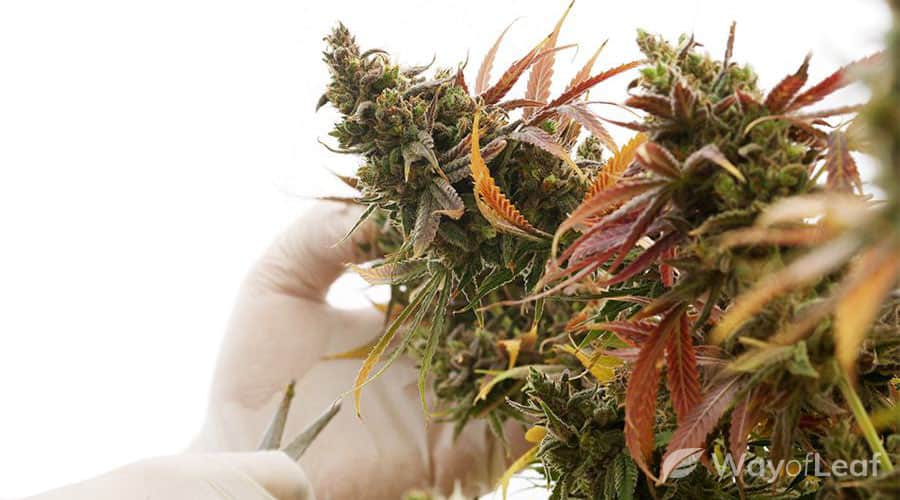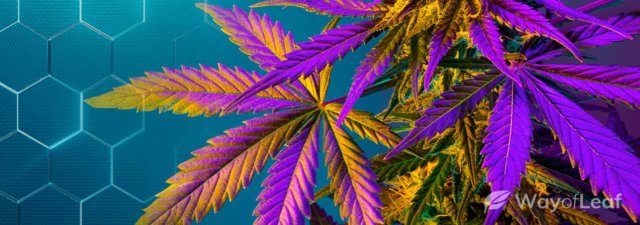It is only when you truly study the marijuana plant that you begin to understand the various parts of its anatomy. There are plenty of people who know when they grow a good batch. They can tell the difference between an indica-dominant hybrid and a sativa-dominant one.
However, not all of these experts are acquainted with the plant’s anatomy. For example, you have the:
- Cola: The flower that develops at the end of any branch. The term ‘cola’ also describes the largest bud that grows on the top of the main stem.
- Bract: These green leaves have a teardrop shape, and resin glands cover them.
- Calyx: This is the bud itself. It features a concentration of sugar leaves, so-called because of the immense covering of trichomes.
- Trichomes: These are tiny, bulbous globes that contain cannabinoids such as THC and CBD, along with aromatic oils known as terpenes.
- Fan leaves: These enormous leaves are part of the harvest and are a prime ingredient in the creation of edibles.
- Nodes: Marijuana grows on skinny stems, and the fan leaves extend out from the nodes.
If you understand cannabis anatomy reasonably well, you’ll realize that we’ve left out a critical component; the pistil.
What Is A Pistil?
The answer to the title question is: “stigmas.” A pistil is a female cannabis sex organ. The tiny hair-like strands that protrude from it are called stigmas. Stigmas collect pollen from male marijuana plants. Once these hairs come into contact with male pollen, they become pollinated. Initially, the stigmas of the pistil are white.
As harvest time approaches, these hairs get darker and progress from yellow to orange. Then they turn red, and finally brown, depending on the strain.
When pollination occurs, the pistil develops a seed, and the plant’s life cycle is complete. Although it plays a significant role in reproduction, as a grower, you don’t want this process to occur. Once your female plant is pollinated, it develops seeds and moves its focus away from producing resinous flowers. As a result, your weed becomes less potent.
Pistils & Young Cannabis Plants
In general, young male cannabis plants develop preflowers before females. You can confirm that your feminized seeds are female in the first 3-6 weeks after germination. If you purchase regular seeds, you can spot whether or not they are male at this point. Pistils can poke out randomly from young marijuana plants. As a result, you should scrutinize them to spot preflowers quickly.
On the stem, there is a stipule, a green ‘hair-like’ growth from which you should see the preflowers. If you see a white hair emerging from several nodes, you have a female plant. Depending on the strain, it could take up to eight weeks of vegetative growth to confirm female plants. This is why we recommend purchasing feminized seeds from a reputable seller.
Pistils & Mature Cannabis Plants
If you spot a male plant, remove it from your garden as soon as possible. Otherwise, it will fertilize the rest of your crop. The stigmas in the pistils are long hairs and can help you determine when a plant is ready for harvest.
In the first few weeks of flowering or when a bud is formed, you should see numerous white hairs coming out of it. For the first 4-5 weeks, the stigmas will remain white. Eventually, you should spot a yellowish color forming.
The actual color you will see depends on the strain. For example, the stigmas may remain yellow until harvest time or turn red, amber, or dark brown. For new growers, this is a tricky period because you need to time your harvest correctly. If nothing else, make sure that at least 50% of the stigmas have changed to a yellow/red/brown color before considering harvesting the crop.
Experienced growers wait until 70-80% of the stigmas have changed color. It is at this point that the buds are likely at their most potent. We recommend purchasing a magnifying glass to check the crop’s trichomes. If three-quarters of the stigmas are red and a majority of trichomes are milky white with a bulbous mushroom head, your plants are ready to harvest.
Don’t Wait Too Long!
If you wait too long, the stigmas will become dark brown and start to dry out. The weed will still get you high. However, some of the THC has degraded into CBN by this point. As a result, the taste and overall potency are negatively affected.

Most cannabinoids, such as THC and CBD, found in a cannabis plant are in the pistils and calyxes. This is known as the flower part, which is harvested, dried, cured, and consumed. Incidentally, if you continue to grow your female plants after pollination, the seeds become a pain to remove.
If you leave the seeds in your weed, expect a harsh and unpleasant smoking sensation, with coughing fits likely.
The following can differ depending on the strain. However, as a rule of thumb, the stigmas remain white for 4-5 weeks into flowering. At this stage, your plants are typically halfway through flowering, and you will see the first change in color. It isn’t until weeks 7-10 where you will notice a substantial number of orange, red, or yellow hairs.
Both female and hermaphroditic plants display pistils and stigmas. ‘Hermies’ also produce pollen and threaten your female plants. It is also important to remember that stress can cause a female plant to develop intersex traits.
My Bud Keeps Making New Pistils! What Do I Do?
It is best to stick with one marijuana strain if you are a beginner grower. Ideally, your buds are ready for harvest at approximately the same time as their neighboring plants. However, some strains finish the buds at the top of the plant first. Others do the opposite and cause confusion in your cannabis garden.
Indeed, you can have issues with the same strain! There are cases where parts of a plant mature faster than others. When this happens, don’t panic! Remember, it is okay to harvest in ‘parts,’ starting with the most mature weed. You may come across a situation where a plant continues to produce pistils just when it is supposedly ready for harvest. In such a case, there is potentially an issue.
For example, heat stress could lead to pistils growing on parts of the plant closest to the light. Another sign of excessive heat/light exposure is if the buds grow in unusual shapes. You may spot new buds covered in sugar leaves growing in these areas. If this happens to you, check out the older parts of the plant to see if it is ready for harvest. It is also a good idea to get the heat under control.
Occasionally, a plant will naturally grow new pistils during the flowering stage. This phenomenon is more prevalent in sativas and Haze varieties. New white pistil growth is reasonable if it happens evenly over the buds, and they remain small. You’ll find that it is a quirk of the actual marijuana strain itself.
If your sativa plant begins producing extra healthy pistils, cut the number of light hours it gets. Reduce from 12 to 10 hours a day. Longer nights could result in the plant maturing faster.
Final Thoughts on the Red Hairs on Cannabis
The red hairs you see on cannabis are called stigmas and are part of the pistil. Although it is not always the case, high-quality buds tend to have pistils with a lot of hairs.
When your weed matures, the color of the pistils’ hair changes.
At first, these hairs are white. As your marijuana approaches maturity, the color changes to red, yellow, or brown. As the pistil matures, it dries out and begins to curl. Once at least half of the hairs have turned red, it is time to consider harvesting your crop.

![HHC vs. Delta 8 [Explained]](https://wayofleaf.com/wp-content/uploads/2023/01/wol-banner-hhc-vs-delta-8-640x225.jpg)


![What Is CBDV? [Effects, Strains, and More]](https://wayofleaf.com/wp-content/uploads/2019/09/mj_what_is_cbdv_1920-min-640x225.jpg)

![Is Cannabis a Fruit or Vegetable? [Here’s the Answer]](https://wayofleaf.com/wp-content/uploads/2019/01/is-cannabis-a-vegetable-or-fruit-640x225.jpg)
![What Is THCA? [Exploring the “Other” THC…]](https://wayofleaf.com/wp-content/uploads/2018/05/mj_thca-640x225.jpg)




